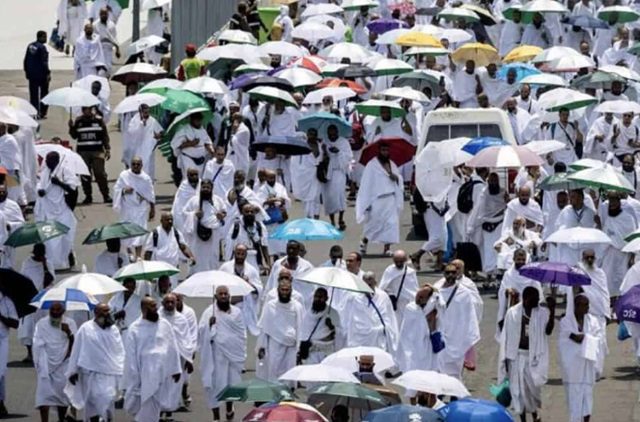BTN News: This years Hajj pilgrimage saw more than 550 people perish as a result of heatstroke when temperatures approaching 125 Fahrenheit (51.8 degrees Celsius) in hits the Grand Mosque in Mecca, as the hajj of millions of Muslims during the Eid al-Adha ceremony turned tragic. That figure includes 323 Egyptians, most of them dying of heat-related causes. The mortuary in Al-Muaisem district in Mecca registered 550 deaths in one of the heaviest casualty tolls in Saudi Arabia.
Saudi authorities have largely tackled the crisis, which the kingdom has leadership over many aspects of managing the annual pilgrimage that gather around 1.8 million people. Meanwhile more than 2,000 pilgrims were reported to have been treated for heat stress but details of the fatalities have been vague.
Despite all safety measures last year 240 deaths occurred from different nations signifying that challenges like wayside assistance had not been fully addressed. The highest number of deaths was among Indonesian pilgrims in 2023.
The death toll from this year’s tragedy once again highlights calls for improved safety at the Hajj, especially in an era of accelerating global warming. The hajj, one of the pillars of Islam and a must for able-bodied Muslims at least once in their lifetime, is a multi-phased journey that for years has drawn more than 2 million to the holy cities of Mecca and Medina for one of the world’s largest religious events, also requiring supervision and planning to safeguard pilgrims.
Those with power are still struggling to understand what took place – and the possible ramifications – and the world is coming to terms with how best to prevent further loss of life on pilgrims making the annual religious journey.


